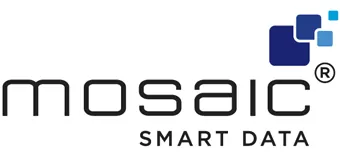Steps Ahead
Man, meet machine: the role of AI and machine learning in the modern sales desk
In our last article we looked at how productivity is one of the core benefits of a bank gaining control over its data and analysing it more effectively. But once a bank has gained this control and insight, how does it go a step further by augmenting sales teams with AI and machine learning tools that can digest large data sets and alert them to the needs of their clients?
By Matthew Hodgson, CEO of Mosaic Smart Data
Traditionally, banks have always held an information advantage over their clients – in fact their business models have been specifically designed to leverage the market information to which they have access and transform it into value enhancing insight.
But in recent years, this advantage has been slowly chipped away at as the markets have become increasingly electronic and the buy-side has upped its game in terms of the data to which it has access, and its ability to analyse large amounts of it. As market and price transparency has increased, one of the core competitive advantages of a bank’s sales desk has been eroded.
Against this shifting backdrop, banks are starting to realise the potential power of innovative machine learning and AI tools in helping them to upskill and maintain their competitiveness in the sales arena. There is a dawning realisation that backward looking BI analysis is not fit for purpose in driving business forward, especially in this era of utilising AI to squeeze every possible efficiency and productivity from the resources at hand.
Some are now starting to deploy these technologies to enable predictive and prescriptive analytics, as well as connecting systems to prompt them as to the next best action for their clients. By absorbing information that might otherwise be missed, AI delivers the analysis to drive new sales engagement with clients and by delivering those insights at the optimum time.
Investment and adoption at scale is expected to increase significantly over the coming years. This comes as no surprise when you consider it has been estimated by McKinsey that AI can potentially unlock $1 trillion of incremental value for banks[1]. These tools can be thought of as a GPS for the sales desk – those banks without it will struggle to compete against more forward-leaning firms who are empowering their employees with the most advanced digital tools.
The evolving role of the salesperson
According to a recent report from PwC, almost 80% of banking and capital markets CEOs see skills shortages as a threat to their growth prospects.[2] This is because, quite simply, banks haven’t managed to keep pace with the changing manner in which their clients want to interact with them.
While no one is suggesting robots will completely replace salespeople any time in the near future, there are certain skills that can be enhanced when man and machine work together in tandem. One of the main skills that clients increasingly demand from banks is a more customised and tailored experience, which in turn drives a more intimate and refined relationship.
In addition, as electronification continues to grow, sales teams tend to manage a larger pool of clients across asset classes. Clients expect salespeople to provide a seamless service in multiple asset classes and have a global view of flows across the organisation.
Data therefore needs to be aggregated from across the organisation and made available to salespeople in one consolidated and comprehensive view so they can, for example, alert clients about new investment opportunities as they unfold – no matter the asset class.
Bridging the skills gap
In recent years, a growing number of large investment banks have launched ambitious projects to apply AI and machine learning techniques to previously unexplored data sources, in order to bridge the skills gap and improve how they sell to clients. A recent survey found that 75% of banks with over $100 billion in assets are currently implementing AI strategies.[3]
Using the right technology, a combination of internal transaction data, external data feeds and unstructured data sources such as newsfeeds, can be standardised and aggregated into one holistic view. AI-powered advisory tools can then be applied to help banks anticipate client activity in order to build inventory for expected demand, identify unique and unforeseen market opportunities, extract timely information from news and websites, and alert sales based on market triggers.
Using AI and machine learning you can, for example, see which customers are likely to defect and move their business elsewhere, and therefore up your defensive measures. After all, it is much more expensive to acquire a new customer than it is to maintain an existing one. You can also become more responsive and relevant to clients, because you are able to see what customer activity you anticipate on a particular day and then serve that customer with the appropriate inventory.
This technology has been leveraged over the last number of years to improve the service high-street banks deliver to retail customers. However, within investments banks the benefits of these same tools are beneficial to sales desks covering all types of clients including corporates, hedge funds, asset managers, insurers, pension funds, central banks and even internal clients.
Some banks are also exploring the use of natural language generation (NLG). This is a software process that automatically transforms data into a written narrative, making lightning-fast generation of expert business intelligence and reporting a reality in today’s financial markets.
NLG can generate intuitive prose that reads as if it were written by the best quant in the house at the click of a button, equipping sales teams with the collateral they need to offer up the most appropriate trading opportunities to their clients. These reports can even be prepared with enough variance and nuance in language and style to keep the copy fresh and engaging to the reader. This power of NLG is driving enormous time saving benefits across the organisation by taking laborious daily tasks and automating them at the click of a button.




